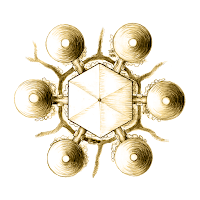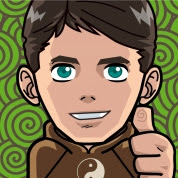"Urbanism has been blind to the plight of the countryside for too long, and the tide is turning as we face the global financial crisis and climate change. And so the dominance of urbanism as an ideology must give way to a new economy of distributed happiness for all, to be found through social justice and a change in culture, in which an appreciation of community and knowledge for their own sakes and love of nature are prime." - Tay Kheng Soon
 There surely are lots of spoken and written words about the emergent transition culture and the energy descent future that awaits us, but still not much in the way of implementation at large scale. Permaculture, Biodynamic Agriculture and the “Organic way” are growing and concrete examples of this new paradigm that sees the environment and our communities as one integrated system, begging to be manged holistically in order to attain sustainable abundance. These frameworks, together with the green-tech revolution and a renewed “return to the land” spirit all seem to be converging upon this bank and shoal of time, adding to the feasibility of a rubanised world. Unfortunately, they are not quite enough by themselves. We need a grassroots worldwide synchronized movement if we choose to thrive.
There surely are lots of spoken and written words about the emergent transition culture and the energy descent future that awaits us, but still not much in the way of implementation at large scale. Permaculture, Biodynamic Agriculture and the “Organic way” are growing and concrete examples of this new paradigm that sees the environment and our communities as one integrated system, begging to be manged holistically in order to attain sustainable abundance. These frameworks, together with the green-tech revolution and a renewed “return to the land” spirit all seem to be converging upon this bank and shoal of time, adding to the feasibility of a rubanised world. Unfortunately, they are not quite enough by themselves. We need a grassroots worldwide synchronized movement if we choose to thrive.The Urban-Rural split renders a disfunctional pattern that seems to be at the root of countless difficulties faced by our civilization. Having our food travel hundreds of kilometers per day, car commuting to and from suburbia while pushing massive amounts of electricity through a grid for thousands of kilometers makes no sense at all, at least not anymore. It stems from old habits, obsolete ethics and an incomplete understanding of our aggregate needs and desires as a species.
There is, of course, a grey scale between Rural and Urban, and there even are examples in the world where urban and rural spatially coexist, but with little or no community.
Rubanisation, a portmanteaux of the words “urban” and “rural”, is a concept envisioned by architect Tay Kheng Soon that portrays the countryside and the city as one integrated space. Designers, architects and futurists like Ebenezer Howard, Buckminster Fuller and Isaac Asimov have visualized such cells of people distributed across the landscape in a harmonious and productive way, and they all share a similar vision. They are circular, about the size of a CBD and can cope with most of the community’s needs while being intertwined and surrounded by wilderness corridors, main crops, water features, vegetable gardens and food forests. Life security and support is provided for.
Intricate and harmonious patterns emerge every time a sincere survey of human needs and desires is made by a designer. Seemingly fractal cells within cells, would allow the landscape to cope with increasing densities of population in a sustainable and resilient way, ensuring a healthy and prosperous community that is immersed in nature.
Inside these rubanised cells, community centers would integrate health, education, research, art, social events and other critical elements of support such as information technology systems. A cell’s DNA is at it’s core, and so the operating system to support human self-organization would be at the core of a ruban settlement. A transparent, democratic and user friendly open government. A people system. While it is true that our civilization is struggling through its technological adolescence, taking a neo-luddite stance will not be of much help if we have in mind that our planet accommodates just shy of seven thousand million souls. The noosphere that the Internet embodies for humankind should be put to use in the most difficult task of restructuring our society in an integral way, listening to the manifold expressions of human culture and symbiotically coalescing them.






